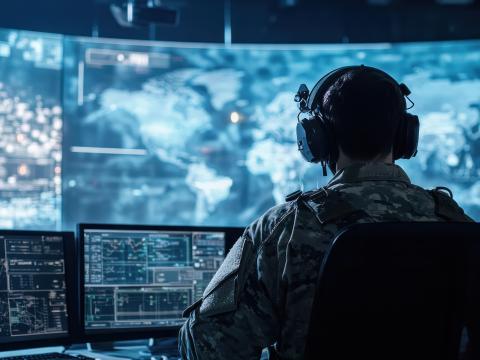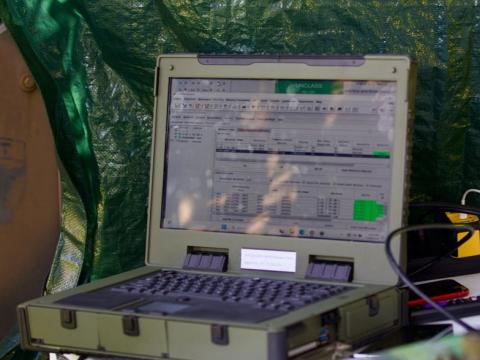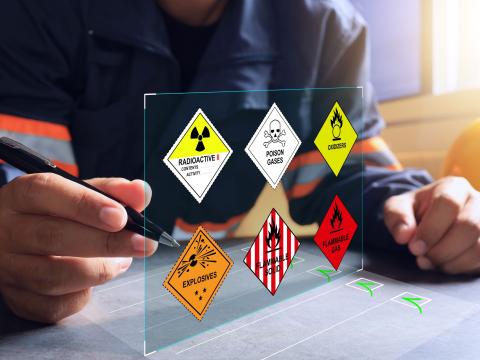Leaders Look to Reduce Soldiers' Communications Budget Stress
Current fiscal and world conditions are taking their toll on the ability of the U.S. Army’s signals community to keep soldiers equipped with the latest developments. However, leadership embraces the challenges as impetus to improve, ensuring that troops are prepared as they transition from an operational to a contingency force. Necessity is inspiring creativity to developing solutions, with the government reaching out to industry for more help. As the service branch’s chief information officer/G-6, Lt. Gen. Susan Lawrence, USA, said, “You can’t wring your hands if you’re rolling up your sleeves.”
Her remarks came during TechNet Augusta, held in September in Augusta, Georgia. Despite problems, the Army is well into creating its LandWarNet (LWN) 2020. Gen. Lawrence assured users that all the resources they need are available through it, with the added benefit of capabilities to share with other soldier communities. “We cannot get to LWN 2020 by operating these very expensive, stovepiped networks,” Gen. Lawrence explained. Many of the efforts undertaken by the G-6 focus on savings, an absolute necessity in the current fiscal climate.
The general remarked several times during the conference that the Army needs industry to help it give soldiers critical capabilities. She, along with Maj. Gen. LaWarren Patterson, USA, commanding general of the U.S. Army Signal Center of Excellence and Fort Gordon, and Maj. Gen. Harold J. Greene, USA, deputy for acquisition and systems management, headquarters, Army, spent nearly two hours one afternoon meeting with industry members to answer their questions and hear their ideas. Opening up increased dialogue between the public and private sectors is a priority for all the leaders who spoke at TechNet Augusta.
Gen. Greene talked about the absolute need for programs to perform and meet their budgets as tight funding changes how the Army conducts business. Program decisions today will build the force of 2025; science and technology decisions will drive the Army of 2035. The Defense Department’s Better Buying Power 2.0 document lays out some guidance for doing more with current resources as an answer to acquisition challenges. “Affordability will be a requirement,” Gen. Greene stated. Efficiency and improvements mandate the move from a systems-of-systems to an enterprise environment.
As it looks ahead, the Army wants to get the most bang for its research and development (R&D) dollar. It is closely examining where to invest science and technology (S&T) funding. The service hopes to benefit from industry’s progress, and leaders strongly encouraged companies to reach out to the Army with any questions they have about how to invest their internal R&D funds. Lt. Gen. Keith Walker, USA, deputy commanding general, futures, and director, Army Capabilities Integration Center, said leaders are examining what they will require in 2030 and beyond. During the recent wars, personnel found a way to enable rapid acquisition that worked around traditional systems. That knowledge will serve the Army as it moves into a situation of reduced resources. Speaking about S&T, Gen. Walker said the Army is looking for that area to push critical advancements. “If you get some kind of breakthrough, you can change the nature of the force,” he explained, and there are many imperatives demanding innovation.
Gen. Dennis Via, USA, commander, Army Materiel Command, said his organization needs the communications community to help him provide soldiers with capabilities even as sequestration hits. Senior leaders should worry about the budget, leaving soldiers in the field to worry about coming home safely, he added. The prospect of leaner funding is a big challenge. Gen. Via explained that leaders have tough decisions to make on money and personnel.
Lt. Gen. Mark S. Bowman, USA, J-6 of the Joint Staff, also reached out to industry, calling the private sector essential to ensuring that capabilities are integrated into the Joint Information Environment (JIE) appropriately. “There’s no single answer,” Gen. Bowman explained. “The JIE is not static.” With the new environment, the military and its partners will enjoy a unified enterprise.
The Network Integration Evaluation is expected to survive any cuts mandated by budgets. The Army is addressing challenges with the event, which overall has proved itself valuable. Soldiers will continue to need a venue to give early feedback to systems and to ensure interoperability among network pieces.




Comments